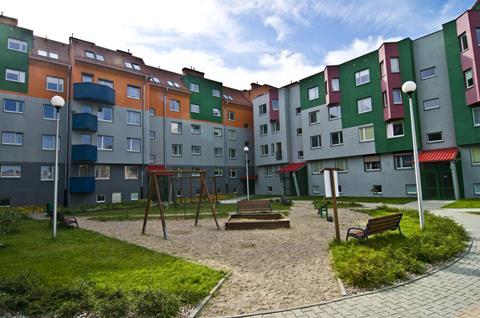Mary Parsons said report has not got all the answers to the ‘beauty’ question, but has captured tone of the debate

The interim report by the government-backed Building Better, Building Beautiful Commission (BBBBC) has stopped short of offering radical solutions to the problems of ugly and inappropriate developments, according to one of its own commissioners.
Speaking at the launch of the report in London yesterday Mary Parsons, group director for placemaking and regeneration at Places for People, said the report had “not got all the answers at the moment” and was offering “nothing radical so far”.
However Parsons did say the report, the result of months of hearings, site visits and hundreds of submissions from developers, local authorities and community groups had “captured the tone of the debate”.
The BBBBC, currently headed by Create Streets’ director Nicholas Boys Smith following the sacking of the former – and controversial – chair Roger Scruton earlier this year, was established by the communities secretary James Brokenshire to investigate issues around the notion of beauty in the built environment, notably when creating housing schemes that were likely to be embraced or rejected by the communities in which they were built.
In a video address broadcast at the launch Brokenshire praised what he called Scruton’s “intellectual contribution being the backbone of the [commission’s] work”. Scruton was already a controversial choice as chair of the BBBBC, but when comments he made on Islamophobia and anti-semitism came to light they made his position untenable and he was fired from the job in April this year.
Parsons said that while the government’s ambition to build 300,000 homes a year from the mid-2020s was understandable it should not mean, as one submission to the commission had suggested, “become a green card for anything goes”.
Boys Smith said he politely disagreed with the view that the report had not been radical, although he admitted that beauty was hard to define – “there can’t be a KPI for beauty”.
He said it was clear communities wanted a greater say in the sort of developments that were being built in their neighbourhoods. “We do need a radical change of attitude so that beauty doesn’t become a backward-looking concern, that it becomes something that looks at today and the future. We should be OK with saying ‘no’ to ugliness,” he added.
The interim document, published five months ahead of the commission’s final report in December, argued the emphasis should be on “beautiful buildings, beautiful places and sustainable settlements beautifully placed”.
It said developments should make existing places better, there should be more early collaboration and engagement between and with local communities, and planning risk ought to be reduced to encourage and allow a wider range of small firms, self-builders and other innovators to develop schemes.
“More predictable design policy and standards should remove a degree of speculation on negotiating down planning requirements to increase land values,” the report said.
Asked at the launch event about permitted development rights which had spawned some “sub-optimal” housing, Places for People’s Parsons said that while she had seen some good examples there was also “clear evidence that it was not working in all situations.
“If the government had put in some minimum space standards it could have been a longer-term solution. I suspect it will probably have to evolve.”
Responding to the interim report Ian Tant, president of the Royal Town Planning Institute, highlighted the issue not only of financial resources to achieve the desired aims, but those of design skills and amongst planning departments.
He said: “The commission has helpfully steered the conversation about beauty to place-making and location of developments and crucially places importance on the planning system and planners to play a decisive role in changing the status quo.
“Beautiful buildings and places all require a well-resourced planning system. It is time national and local governments heeded the commission’s wide-ranging recommendations to use the planning function more creatively for place-making rather than development control, resource it properly and support it with more formal design policies and codes, to bring about a step change in the way the country builds.
“There is much to be welcomed in this interim report. We look forward to the opportunity to continued collaboration with the commission and cCommissioners”.











No comments yet